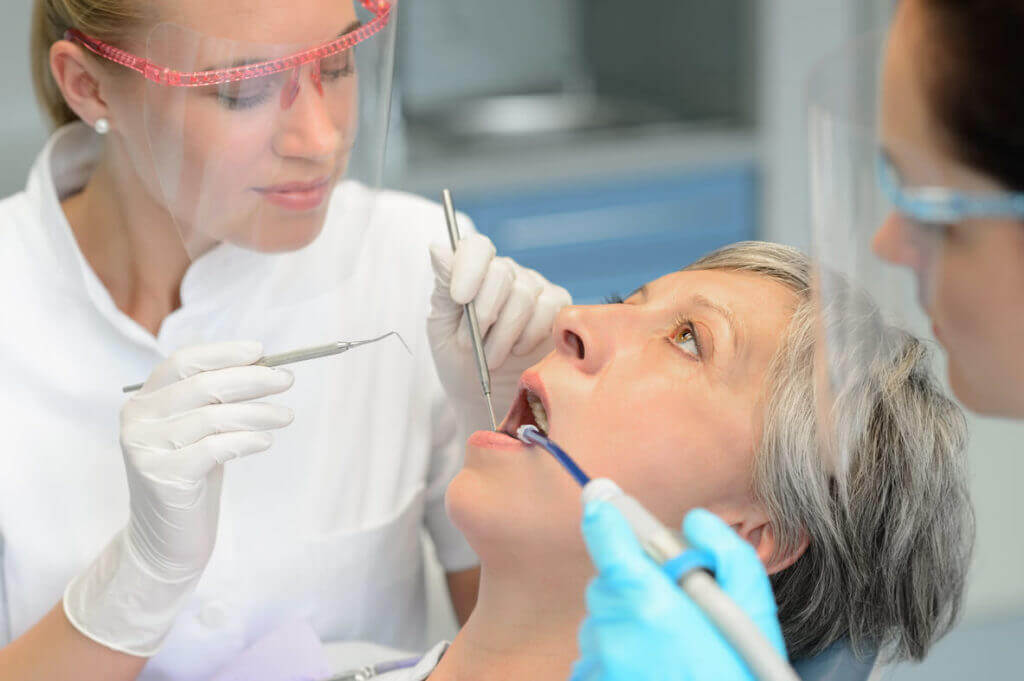All about Legacy Orthodontics
An orthodontist is a dental professional trained to identify, avoid, and treat teeth and jaw irregularities. They remedy existing conditions and are educated to determine issues that may establish in the future. Orthodontists function with individuals of all ages, from youngsters to grownups. Individuals often connect an excellent smile with healthiness.
Malocclusion, or misaligned teeth, can bring about dental concerns, including dental cavity, periodontal illness, and challenging or painful eating. But not everyone is born with straight teeth. If you have a negative bite or big areas between your teeth, you might want to get in touch with a dental practitioner focusing on orthodontic care.
The Legacy Orthodontics PDFs
( Picture Credit Scores: DigitalVision/Getty Images) Orthodontists make use of dealt with and removable dental tools, like braces, retainers, and bands, to alter the position of teeth in your mouth. Orthodontic therapy is for dental irregularities, including: Misaligned teethBite issues, like an overbite or an underbiteCrowded teeth or teeth that are as well much apartJaw misalignmentThe objective of orthodontic therapy is to improve your bite.
A healthy and balanced bite ensures you can consume, chew, and speak appropriately. While you could consider orthodontists as mostly for kids or teenagers that require dental braces, they can deal with oral troubles at any type of age. Orthodontists attend college, oral institution, and orthodontic college. After college graduation, they invest 2 or 3 years in an orthodontic residency program.
All orthodontists are dental experts, but not all dental experts are orthodontists. Orthodontic residency programs offer intensive, focused direction for oral specialists. They concentrate on two areas: Just how to correctly and safely relocate teeth Just how to properly assist growth in the teeth, jaw, and faceOnce an orthodontist has actually completed training, they have the choice to become board accredited.
Not known Facts About Legacy Orthodontics
Imbalance, or malocclusion, is one of the most usual reason people see an orthodontist. It is genetic and is the outcome of size distinctions between the top and lower jaw or between the jaw and teeth. Malocclusion results in tooth congestion, a twisted jaw, or uneven bite patterns. Malocclusion is typically treated with: Your orthodontist attaches metal, ceramic, or plastic square bonds to your teeth.
Some people need a headgear to assist move teeth right into line with stress from outside the mouth. A retainer is a personalized gadget that keeps your teeth in location.
They're frequently used on youngsters. They can create extra area in the mouth without needing to pull teeth. If you have a major underbite or overbite, you could need orthognathic surgical treatment (also called orthodontic surgery) to extend or reduce your jaw. Orthodontists utilize wires, surgical screws, or plates to sustain your jaw bone.
You may require to see an orthodontist if you have: Crowding or otherwise enough room for every one of your teethOverbite, when your upper teeth come by your base teethUnderbite, when your base teeth are also much forwardSpacing or problems with gapsCrossbite, which is when your top teeth fit behind your base teeth when your mouth is closedOpen bite or a vertical space in between your invisalign front base and top teethMisplaced midline, when the center of your base and top teeth don't line up Dealing with an oral malocclusion can: Make biting, chewing, and speaking easierImprove the symmetry of our face and your general appearanceEase pain from temporomandibular joint problemsDifferent your teeth and make them much easier to clean, assisting protect against dental caries or dental caries It's usually a dental practitioner who first notices misaligned teeth during a routine test.
8 Easy Facts About Legacy Orthodontics Explained

Throughout your very first orthodontic appointment, you'll likely have: An oral examPhotos taken of your face and smileDental X-raysPanoramic (360 degree) X-rays of your face and headImpressions to produce mold and mildews of your teethThese examinations will certainly help your orthodontist recognize exactly how to continue with your treatment. braces. An orthodontist is a dental practitioner who's had training to treat your teeth and jaw
Orthodontists may carry out surgical procedure, exams,X-rays,and even more to help you achieve a more comfy, much healthier smile. An orthodontist is focused on your bite, so something like a damaged tooth would be dealt with by a dental expert. Orthodontists are dental experts yet not all dental professionals are orthodontists. Orthodontists are concentrated on your bite, or the method your teeth meshed, and the straightness of your teeth.
Ever before questioned exactly how celebs constantly seem to have completely straightened teeth? The solution frequently lies in the experienced hands of an orthodontist. But just what does an orthodontist do? Orthodontists are dental experts who concentrate on remedying abnormalities in the teeth and jaws. Their knowledge exceeds simply developing a beautiful smile; it extends to improving your total oral health and feature.
Some Known Details About Legacy Orthodontics

, orthodontists have a varied toolkit at their disposal. These reliable dental braces make use of a system of braces bound to the teeth and attached by cords.
Clear aligners, like Invisalign, are a preferred alternative for clients looking for an extra very discreet treatment alternative. These detachable trays are personalized to gradually change the teeth's position. Headgear may be utilized along with dental braces or aligners to apply extra targeted forces, especially for dealing with jaw discrepancies. In situations of slim jaws, palatal expanders can be utilized to create space for appropriate tooth positioning.
Comments on “A Biased View of Legacy Orthodontics”